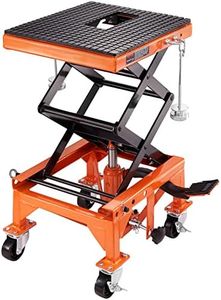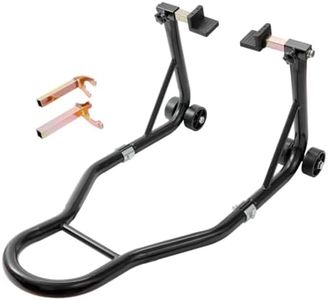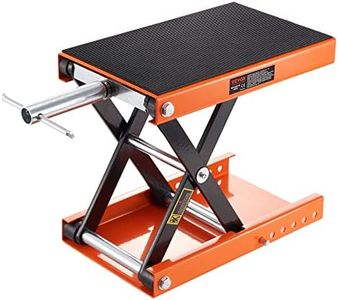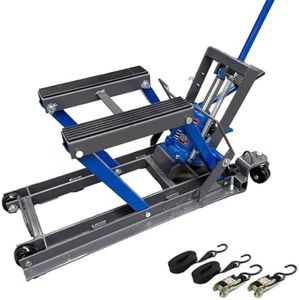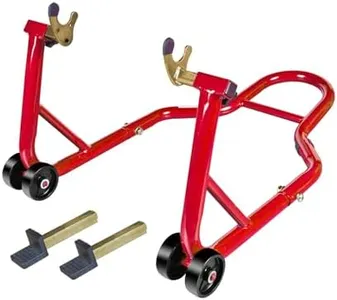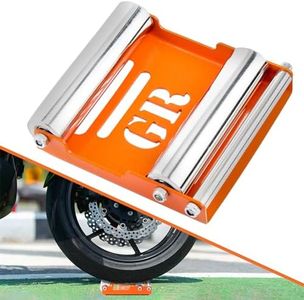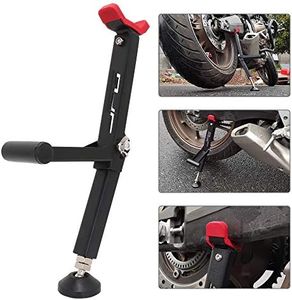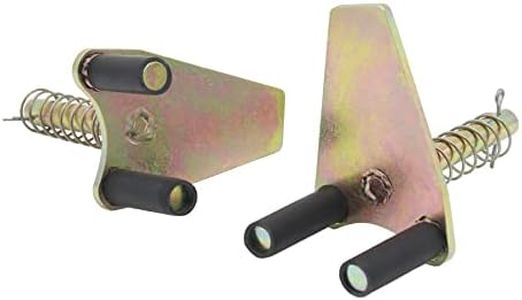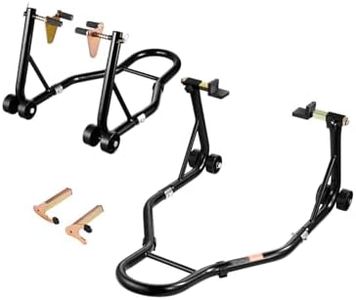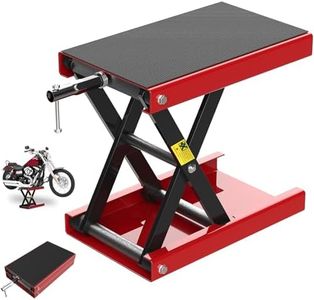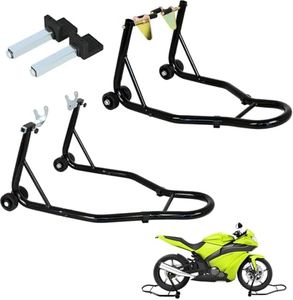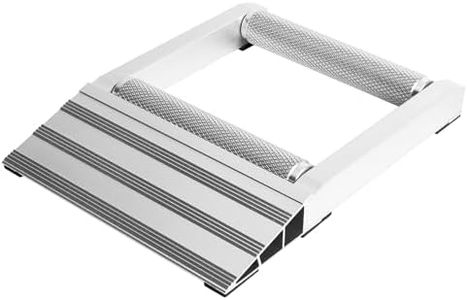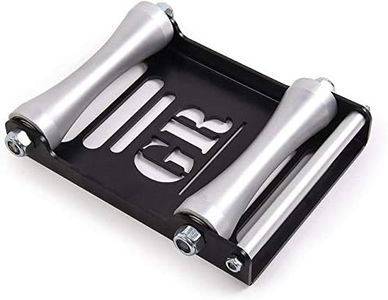We Use CookiesWe use cookies to enhance the security, performance,
functionality and for analytical and promotional activities. By continuing to browse this site you
are agreeing to our privacy policy
10 Best Motorcycle Stands
From leading brands and best sellers available on the web.By clicking on a link to a third party's website, log data is shared with that third party.
Buying Guide for the Best Motorcycle Stands
Choosing the right motorcycle stand is important for both safety and convenience. Whether for maintenance, storage, or display, the stand you pick should match your bike's type and your intended use. Understanding the main specifications will help you select a stand that keeps your motorcycle secure and easy to access.Type (Front, Rear, Paddock, Center, Lift Stand)The type of motorcycle stand determines its primary use and compatibility with your bike. Rear stands support the motorcycle from the swingarm and are common for chain maintenance and storage, while front stands lift the front wheel for wheel or fork work. Paddock stands usually refer to both front and rear variants used on racing bikes, center stands are often integrated into bikes for stable upright positioning, and lift stands are generally used for dirt bikes or heavy-duty maintenance. Think about what you plan to do most often: regular cleaning and basic maintenance may only require a rear stand, while more involved work or both wheels off the ground means you’ll want compatible front and rear stands.
Weight CapacityWeight capacity is the maximum weight a stand can safely hold. It's important because using a stand not designed for your bike's weight can be dangerous. Stands are grouped by light, medium, and heavy capacities: lighter stands are for smaller motorcycles like scooters, medium suits most standard bikes, and heavy-duty stands are for large bikes like cruisers or sport-touring models. Always check your motorcycle's weight and ensure the stand is rated above that figure for safe support.
Material (Steel, Aluminum, Composite)The material of a stand affects its durability, strength, weight, and resistance to elements. Steel stands are usually the most robust and stable, suitable for heavier bikes, but they weigh more. Aluminum stands are lighter for easier handling, good for moving around frequently, but may not hold up to the same heavy loads as steel. Composite materials are lightweight and often corrosion-resistant, suitable for occasional use and lighter bikes. Consider where you'll be using the stand and how much weight you need to support when choosing the material.
Adjustability (Width/Height)Adjustability means the stand can change its width or height to fit different motorcycles or user preferences. This is important if you want to use the stand for more than one bike or need to lift the bike to a specific height for different maintenance tasks. Fixed stands work fine for single bikes with known dimensions, while adjustable stands are versatile and future-proof. Check your motorcycle’s fork and swingarm sizes and choose a stand that can adapt to them comfortably.
Wheel Type (Rollers, Casters, Fixed Feet)Wheel type affects how easily you can position or move your motorcycle while it’s on the stand. Rollers and casters let you maneuver the bike in tight spaces or rotate it, which is helpful in a small garage. Fixed feet provide greater stability but make the stand harder to move once the bike is up. Choose casters or rollers if you need mobility, and fixed feet if maximum steadiness is more important for your use.
Attachment Method (Fork/Spool, Under-Fork/U-Support)The way a stand attaches to your motorcycle matters for both safety and compatibility. Some stands lift using spools attached to your swingarm (fork/spool), which provide a secure and scratch-free connection. Others use under-fork or U-supports that cradle the swingarm directly, making them more universal but possibly less stable or gentle on finishes. If your bike has spools, a spool-compatible stand is usually best. Otherwise, check that the stand’s contact points fit your bike’s swingarm or fork design.
